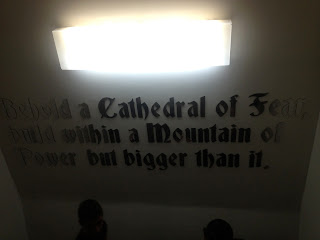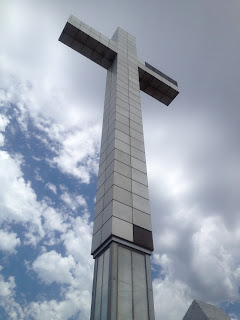So, as you may be wondering, a lot has happened since my last post on July 25. I don't really have a good excuse for the long period between posts besides trying to enjoy the last week or so of the dialogue. I wish I could blame the Olympics somehow or another... Or Batman: The Dark Knight Rises.
After we heard a presentation about Praxis, we did the following:
After we heard a presentation about Praxis, we did the following:
- Visited the foreign policy advisor to the President
- Enjoyed a lecture from our TA covering an introduction to Serbian politics
- Visited the Ministry of Foreign Affairs
- Visited the Belgrade Center for Security Policy (www.bezbednost.org)
- Visited the Institute for International Politics and Economy
- Visited the E8 Center
- Stayed in Novi Sad for the weekend and enjoyed every minute of it
- Prepared for and participated in two class disputations
- Visited the Joseph Broz "Tito" museum
- Visited the Nikola Tesla Museum
- Visited the Serbian Military Museum
- Toured the Belgrade Zoo
- Took an "Underground" Tour of Belgrade
Here are some of my take-aways from our pre-Novi Sad meetings:
- Nobody knows what the future holds for Belgrade-Pristina negotiations. The Foreign Policy Advisor explained to us that President Nikolic is trying to form some consensus in Belgrade about how to approach negotiations with Kosovo. Serbians seem to understand that resolving the conflict over Kosovo's status is a key step towards EU integration. It is also a chance for the President to evaluate the previous administration's approach and how to best move forward.
- Corruption is rampant. One of the first places we visited in Belgrade was the Special Prosecutor's Office for War crimes, which is housed in the same building as the Organized Crime Court. We were able to step into the largest courtroom, which is used to try upwards of 20-30 defendants at a time. We also heard from anyone with an interest in policy that corruption and organized crime are pervasive in the Serbian politics. One of the more recent tragedies was the assassination of Prime Minister Zoran Djindjic, which is thought to have been executed by police forces with the kill order coming from high up in the government.
- Serbia has committed to becoming an EU member. As of this last March, the EU and Serbia agreed to work together towards EU membership for Serbia. Besides dealing with #1 and #2 above, the EU is requiring Serbia to deal with the displaced and minority populations, like the Roma and Egyptians (think Praxis), develop a stronger EU-worthy economy and continue to prosecute war crimes, among other goals. While no one pointed it out (besides Maja, our host at Hotel Sokak, as she referred to BiH), Serbia, which has historically struggled to find its own independent existence underneath the influence of the great powers, is committing to sacrifice more sovereignty to join the EU.
The disputation that I was a judge for asked the question,
“Should the EU demand that Serbia recognize Kosovo as a condition of
membership?” Our team of judges was ready for just about anything short of a
zebra v. rhino piano duel, but we were faced with run of the mill arguments. In
the end, we were most compelled by the side arguing that the EU should not, if
it can, make the demand that Serbia recognize Kosovo as a condition of
membership.
After our disputations, the rest of the week was spent on
seeing some museums around Belgrade.
Upon arriving back in the states and watching Batman: The
Dark Knight Rises, I started thinking of some parallels between Batman, Gotham
and the Balkans. In each of Christopher Nolan’s Batman movies, the villain
attempts to put Gotham’s fate into the hands of the people, who the villain
expects will shake Gotham to its core. In Batman Begins, Scarecrow used “fear
gas”. In The Dark Knight, the Joker tests the will of two ferries, one of
civilians and one of prisoners, to see which ferry would pull the trigger on
the other. In the final installation, Bane cuts Gotham off from the outside
world and holds the city ransom with a 4-5 megaton nuclear bomb so that the
masses can “take back their city”. In each, Batman, the hero Gotham needed but
did not ask for, appears to save Gotham from mayhem and destruction.
In many ways, the Balkans has faced the same reckoning as
the fictional Gotham has as a result of various actors tempting fate. The
international community does not deserve to be held equivalent to Batman in
this scenario, but I think the Balkans needs some real-life Batmans. Despite
the enormous hurdles and underlying tensions waiting to boil over, I remain
optimistic that there are enough brave and courageous people in the Balkans to
prevent the house of cards from falling down.
The End. For Now.































